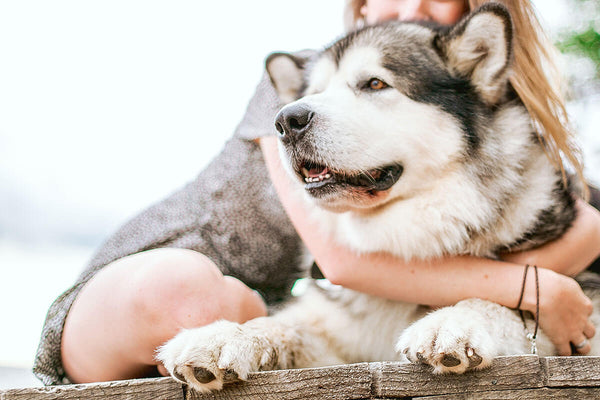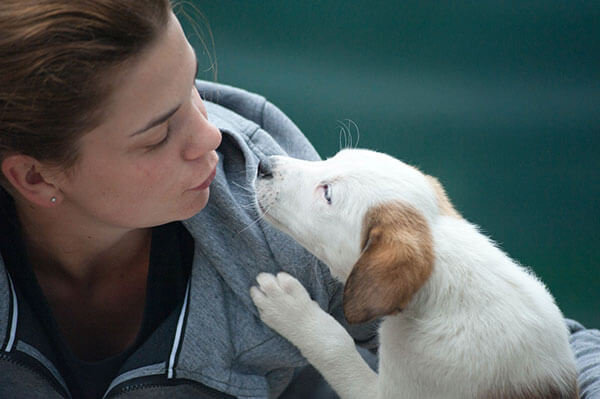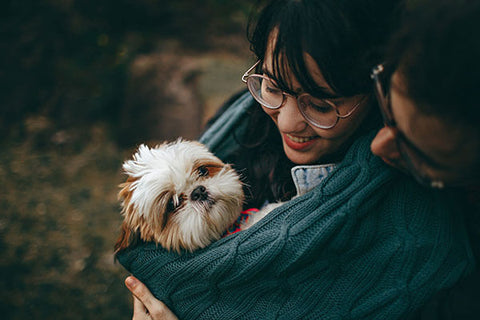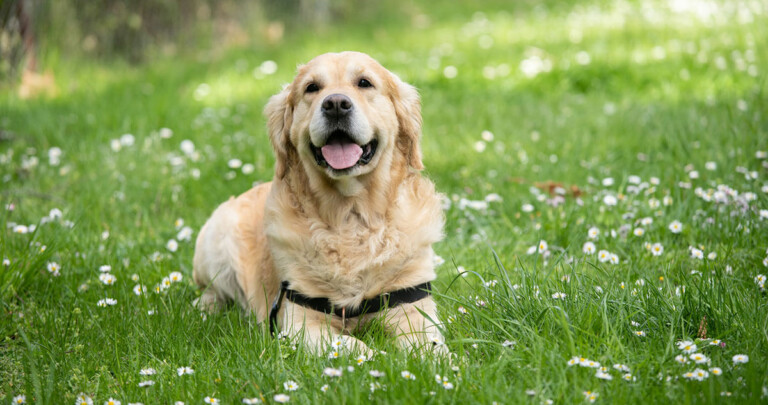Are you going to parent a puppy or dog? You must learn how to care for a dog to raise a happy one. It’s inevitable even if you’re already living a busy life.

To have a dog for years as your family member, we’ve got you this perfect dog care guide. No matter what breed or age of dog you’re raising, this guide will help you with all the basic dog care tips.
Let’s get into our blog post that will guide you about taking care of your dog ideally. Your friendly and satisfied dog is just a 15 mins read away.
Tips for Taking Care of a Dog

Adding a dog to your family is as exciting as having a baby. Your genuine affection comes as being careful. However, if you overlook the basic care needs of your dog, he/she will not complain — humble creature.
But soon, you will see signs of lack of care, such as confused behavior or deteriorating health – you never want that.
Feeling concerned? Don’t worry. Just get started with these basic dog care tips that every dog owner should follow.
1. Get the Right Dog or Puppy
You might be reading this guide because you’ve already got a dog or you’re planning for it. If you haven’t got your dog yet, then it’s necessary to get the dog that suits your family. For example, some dog breeds can be attractive but less family-friendly, especially when you also have kids.
In the same way, you might be a person living alone, going for a 9-5 job. In such a case having a dog with higher social needs can be problematic. You’ll simply punish him by keeping him restricted for hours.
Likewise, the bigger dogs are hard to keep in tiny houses or apartments. So, make sure to figure out what type of dog you need.
2. Get Dog Essentials
Would you like to be surfing the Internet for dog food at the same time your dog is hungry? Of course not!
So, whether you have got a dog or you’re about to bring one home, having all the dog essentials is part of dog care. We’ve got you these essentials checklist here. Just have a look, and get those that you still feel are missing.
- Dog bed
- Dog crate
- Dog blanket & mat
- Food and water bowls
- Dog clothing (Seasonal)
- Dog collar
- Dog ID tag
- Traveling cart/carrier
- Dog harness
- Dog leash (preferably of nylon)
- Dog chew toys
- Exercise pen
- Poo Bags
- Dog grooming tools (you can get a dog grooming kit)
- Dog shampoo
- Dog Toothbrush and toothpaste
- Dog First Aid Kit
You can find many more dog essentials here.
If you haven’t brought your dog home yet, you can simply keep this checklist to get necessities according to your dog’s size and breed.
3. Get your Home and Yard Dog Safe and Prepare a Spare Room for him
Is your house dog safe? Making your house dog safe doesn’t mean checking the bolts of your house. Instead, you’ve to make it hazard-free, including your yard. For this purpose, check out these life-threatening obstacles and make your house safe for your lovely pup.
- No breakable object is within reach of the curious dog.
- No windows are open.
- No chemicals or toxic compounds are within reach.
- The trash can is unshakable: consider the weight and height of the can.
To add more safety, you can bring him an exercise pen. In this way, you’ll also train him in his area.
You never want a wandering dog, nor does your dog like it. Your dog needs space. So, get him an ample area.
The area also needs to be safe and less crowded because your dog will love to sleep in his area for 18-20 hours. Indeed, enjoying an undisturbed sleep will surely result in a cheerful dog. It’s where you’ll also keep all your dog’s essentials handy: water and food bowls, toys.
4. Get your Dog Safe through Identification and Bring him Home
Now the happy beginning starts that will test your practical dog care skills. The time is to get your dog and bring him home. Yet, you need to get your dog registered first for his safety.
For this purpose, the ID chip is one of the best ways to proceed. The ID chip will be injected under your dog’s skin and over the shoulder blades. The unique number carrying microchip will be registered on a database, mentioning you as the owner.
However, it’s also necessary to get your dog checked by the veterinarian before bringing it home for your dog’s health and safety. So, first, find a reliable veterinarian and have an appointment. In this regard, your friends can also refer you to their vets.
5. Take Care of Dog’s Food and Water
Congrats, your dog has arrived home! Now your foremost responsibility is to take care of your dog’s food and rest.
For your dog’s proper nourishment, it’s essential to feed him twice a day. Why?
- The routine feeding will help with the poop training as well. And ultimately bring ease. Your vet can help you schedule the dog’s food and you can also have a look at the dog food packaging.
- Be aware that your dog should not receive treats other than for training. Feeding a dog on peoples’ food can cause health problems. The second basic necessity of your dog is water. How often should you give your dog water?
The answer is simple, whenever he’s thirsty – you can’t predict when. Therefore, the best way is to always leave water accessible for your dog.
As a rule of thumb, your dog will need ½ to 1 ounce of water per pound of body weight in a day. However, if you’re traveling, you must give your dog water — your furry friend won’t ask you.
- A thirsty dog can lick water from nearby areas, which can be injurious because of algae. So, keep your dog hydrated with clean and fresh water.
6. Take Care of your Dog’s Health
Remember how we advised you to get in touch with your dog’s vet? But when should you visit him?
Your visit to a veterinarian will only be needed during scheduled checkups if you manage your pet’s health well at home.
Here are some tips to keep your dog healthy:
- Avoid overfeeding your dog. An obese dog is at significant risk of diseases.
- Monitor the moisture level of your pet’s nose. A wet nose is a sign of good health. In summer, it should be moister.
- Get your dog vaccinated. It’s the surest way to help your dog enjoy a disease-free longer life.
- Twice a year, take your dog to the vet for vaccination and checkups without waiting for a sickness.
- Spaying/neutering is one of the most desirable health care. It helps prevent mammary gland tumors in female dogs and prostate disease in males. The best time to neuter your dog is at 5-10 months.
- Keep your dog fleas and ticks free by cleaning the carpets, using a natural flea collar in the vacuum, washing the dog bed, examining the dog skin, and adding little garlic to your dog’s diet.
- Insuring your pet allows you to manage major expenses in the event of an accident.
- Proper dental, ear, skin, paws, and hair care always aims at improving health — a groomed dog is a bonus.
- It’s also advisable to keep your dog’s essentials clean. So, regularly check the dog bed and kennel for pests, and wash the dog bed, coat and mat weekly.
- In winter, keep your dog warm with sweaters and indoor heating. Not only this, but it also prevents your dog’s paws from carrying toxic ice salt by the roadsides that he can lick.
7. Do Proper Dental Care for your Dog.
We’re exclusively mentioning dental care for dogs. The reason is, it’s easy to overlook but hard to restore.
Health carers warn that the most common dental disease among pets is periodontal disease. Nearly 80% of dogs can suffer from it at some level. At the same time, dog owners are well aware of the condition — fortunately.
Periodontal disease can be the root cause of liver, kidney, and heart issues in dogs. And the best way to prevent it is through dental care.
Try to take care of:
- Oral cleanliness of your dog’s mouth through regular brushing. If your dog is new to dental care, you can train him via a reward system.
- Make sure your dog’s diet is completely nutritious.
- Get your dog checked by the vet.
- Give cleaned chew toys that help with dental strength.
Thus, you can help your dog stay active and happy at any age.
8. Do Grooming of your Dog
Can you recall we’ve told you the dog grooming is a health essential? Here is why you should pay attention to your dog and how or where you can do that.
- Regular brushing helps with dog shedding. It also allows you to apply treatments, e.g., shampoos.
- Bath your dog when needed. You can bathe your dog twice a month but bathing twice a week using lukewarm water discourages the allergies in owners. If you’re an outdoor freak, then bathe your dog twice a week.
- Trimming dogs’ coat is also advisable. The controlled, clean coat lets you monitor your dog’s skin health. Thus, it lets you treat the potential health risks on time.
- It’s difficult but not avoidable. You should trim your dog’s paw nails and hair beds between nails. Yet, be careful, you might not trim the soft/alive part of the nail.
If your dog allows you to trim the nail, it’s certainly an exemplary behavior that must follow with a reward. If it’s not so, you can gradually train your dog through rewards.
9. Schedule Exercise and Play for Mental Stimulation and Socialization
Pet owner or pet parent? If you place yourself in the shoes of a “pet parent,” you can understand well how needed it is to take care of your dog’s play and exercise. You never want your child to be deprived of its need for exercise, fun, and play.
The joyous news is, the dogs are social.
So, they need regular play and walking opportunities. Yet, it is essential to do the activities like a religious obligation.
Here is what you should do for the mental health of your dog:
- Routine walks are essential to keep your dog calm. You can schedule 30 minutes of daily walking 5 days a week. It’ll help your dog to be social and healthy besides getting rid of destructive behaviors like chewing, digging, or barking.
- To keep your dog happy, you need to add a variety of toys: one toy at a time and extended walks in his routines.
- Studies suggest that interactive games, play, and puzzles are great for your dog’s mental and motor development. It brings a sense of harmony and closeness with the PARENT in your dog. Thus, these games are a peaceful way to let you establish a healthy relationship with your dog daily, with no extra effort.
- Socializing your dog is also critical for your dog’s mental health. It’ll keep your dog friendly and help deal with fearful behavior. You can begin socializing with your dog at 18 weeks. Yet, it’ll require more support, understanding of the dog’s behavior, and positive stimulation if you have got a grown-up dog.
- Dogs have their doggy nature. So, you can’t confine them from showing their natural behaviors outdoors. During outdoor walks, if you see your dog following scents, be gentle.
10. Do Home Training of your Dog
Proper training ultimately earns you a joyful baby. Thus, you help your dog with its mental and behavioral health through positive reinforcement.
Here are some hardest parts of home training to take care of a dog that you can do more easily by following our advice:
- Potty training can be problematic, especially when you’ve got a grown-up dog. It’s why many dog parents are impatient and use punishment, which destroys dogs’ social behavior. It can be more challenging with aggressive dog breeds. Yet, you need to appreciate your dog’s exemplary behavior through warm responses and treats.
Make sure you reward your dog’s proper pooping and peeing in the wanted places — outdoors is the best. Whenever your dog finishes nature’s call positively, shout a specific word to appreciate him besides the treat.
- If you find your dog peeing or pooping in the wrong place, you must catch him. And shout outdoors. Correcting the behavior will help eliminate all the chances of bad behavior in the future.
- Clean the dog’s soiled area completely to avoid repetitive wrong usage of the area — your dog can divert from the desired behavior.
- Paper training is also a good option. Though prolonged, it helps you continue your outdoor routines and relieve your dog.
Certainly, you can train your dog the way you want. But consistency and patience are the keys when you are concerned about how to take care of a dog.
11. Create a Bond with your Puppy

All of your training, rewarding, and time spent can earn you the prize: a strong bond with your dog. What do you think is the bond between a parent and a child?
You wish for a similar connection with your faithful partner. It’s indeed a part of a dog’s care.
All your engagement with your dog is the best way to develop a healthy relationship. Yet, apart from training, some pure compassion is inevitable. You can be a “pole” to attract your dog if you:
- Spend extended time cuddling with your dog.
- During routine tasks, communicate with your dog verbally. Surely, your dog will learn to understand you.
- Don’t scold or shout at your dog, but wait for your dog’s positive behavior.
- Exercise with your dog.
- Love your dog
What are Some Don’ts of Dog Care
You’ve known so many “do’s” of dog care. Yet, “how to take care of a dog” is also a matter of some don’ts that can help your dog stay safe and cherished.
- Don’t call your dog stubborn or unfriendly. Your dog might not understand it, yet you might set a belief about your dog — a lifelong negative experience with the dog will result from it. Instead, understand that your dog’s behavior, like barking and attacking, responds to some stimulus.
- Avoid tying your dog in a public area unattended. Your dog might be trapped in his leash and get injured. The traumatic event can alter your dog’s behavior forever. Similarly, beware of leaving your dog in confinement in the yard. The weather can affect him badly.
- Don’t restrict your dog’s toys if he chews them. Destructive chewing is an outcome of boredom. It makes them annoying explorers and chewers. So, figure it out instead.
- Don’t let your dog move freely in your truck’s back or leave him in the car when you go shopping. Some accidents can wait for him, like heat stroke or becoming a victim among the 100,000 killed dogs in truck beds each year.
Final Thoughts
Your journey to care for your dog is an ongoing process. In every situation, you need to seek for advice about your dog’s care. Detailed research can help you the most.
Therefore, you can keep this article on “how to take care of a dog” handy for timely info. You can also share this valuable information with your dear ones who have got dogs. They’ll surely appreciate your share of care.

